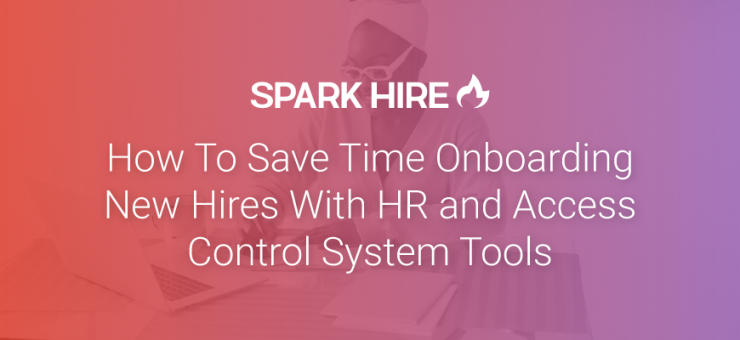Efficient onboarding processes are vital to ensure a company’s security and compliance. When establishing new hire onboarding practices, there are ways to optimize the process by integrating HR and access control system tools.
Security must always remain a priority
Access management is critical to successfully protecting companies from security breaches, and having key security measures in place is critical in optimizing the onboarding process. In addition, cutting-edge access control systems are the future of enterprise security, and technological advancements now allow for optimized, automated, highly secure systems with the option for remote management.
Integrating HR tools with access control systems enable real-time adjustments to be made to authorization credentials. Everything from commercial access control to video reader systems can be integrated with HR software tools to allow for remote and instant management of access rights.
Integrating HR tools with access control systems using cloud-based technologies can also save time with the onboarding process. For example, it allows for instantaneous permissions to be granted to new hires, streamlining their onboarding experience. In addition, access security features, such as smart locks, enable business owners to carefully manage the physical security of their enterprise without the need to issue physical credential keys or fobs.
The importance of automation
As businesses grow, it becomes ever more challenging to carry out onboarding efficiently and effectively.
Manually monitoring candidate screening, access control, security policies, background checks, application access, and security training for all new employees creates heightened security and reduces data breach incidents. Additionally, manually managing all of these onboarding aspects puts immense strain on the workload of staff and management, and time is money.
Adopting automation software is critical to improving the security of the onboarding process. Integrated security and HR software also support staff in ensuring that any leaving employees are efficiently removed from all secure access systems.
Improved security
This level of security integration also provides a company with accurate, up-to-the-minute information regarding their security posturing.
Thanks to cloud-based automation software, enterprise security systems can run seamlessly in the background, freeing up security, HR, and IT staff to focus on further optimizing best practices.
When it comes to onboarding, being able to verify that the right employees have appropriate access to the right tools, security permissions, and physical access to restricted areas makes the process of establishing new hires infinitely more efficient.
Additionally, ensuring that accurate controls are in place when it comes to sensitive and confidential information, customer data, and system access help to demonstrate your business security to customers and partners.
Minimizing the risk of avoidable error
Manually managing onboarding is not only very time-consuming, but it relies heavily on people carrying out essential, yet repetitive tasks that expose the business to the risk of costly errors.
Companies can easily keep track of secure access permissions when HR and access control systems are automated. In addition, automated, fully integrated systems enable instantaneous communication between teams and create vital alerts to any security issues that may arise.
Automating the process can also help to customize workflows and automated reminders can be set to help ensure that all necessary onboarding tasks are completed efficiently.
Integrating HR and access control systems
When businesses directly integrate their access control systems with their HR tools, accurate employee onboarding and out-boarding dates are automatically imported into security systems. This allows companies to efficiently produce reports and identify potential security risks, such as employees accessing unauthorized secure areas where sensitive data is stored.
Optimizing onboarding
- Define your onboarding objectives. Clearly outline the content and structure of your business’s onboarding program.
- Carefully consider all important information that new hires require about the organization and their new role.
- Create connections. By identifying the key team players related to the new role, everyone can take responsibility for their part of the process. Then, structure processes that support vital new connections, assign mentors, and ensure that new hires feel well-connected from the beginning.
- Stay closely engaged with new hires as they transition into the company. Onboarding can take time. Create timetables and regular check-ins to ensure that new employees continue to integrate well into the business and teams, as well as to ensure that their security awareness is optimal.
- Continually review your onboarding process. Automating your HR tools and access control systems goes a long way towards simplifying the process of ensuring optimal security, but onboarding can be complex and require ongoing improvements. Ask for feedback from new hires as to how the process could be improved in accordance with their experience.
Final thoughts
Successful onboarding is crucial to the successful integration of a new hire, and efficient practices are key to optimizing the security of the process, as well as saving time and maximizing ongoing enterprise productivity.
Utilizing cloud-based technologies and integrating your HR tools with your access control systems enables highly secure and efficient management of onboarding processes.











